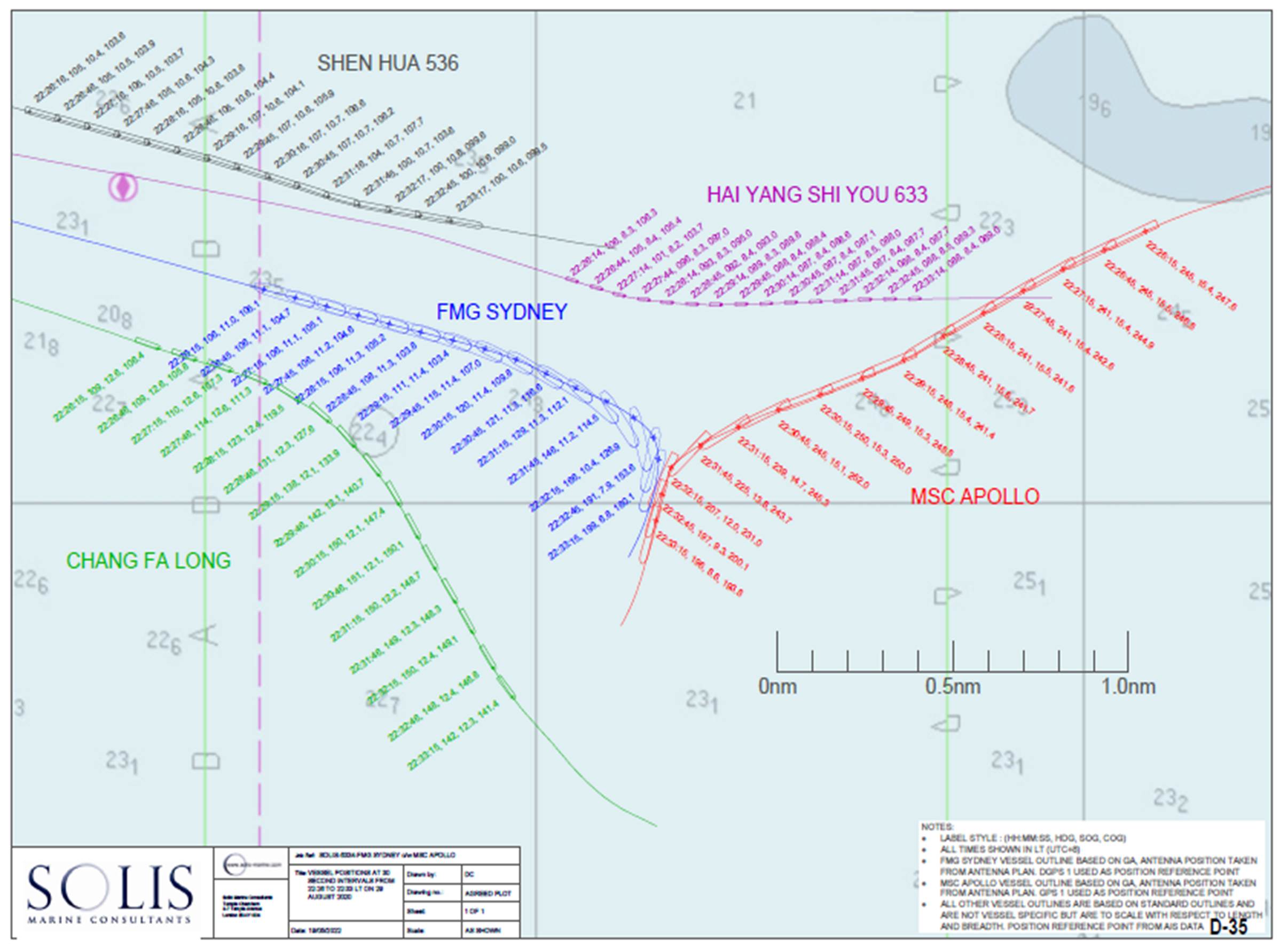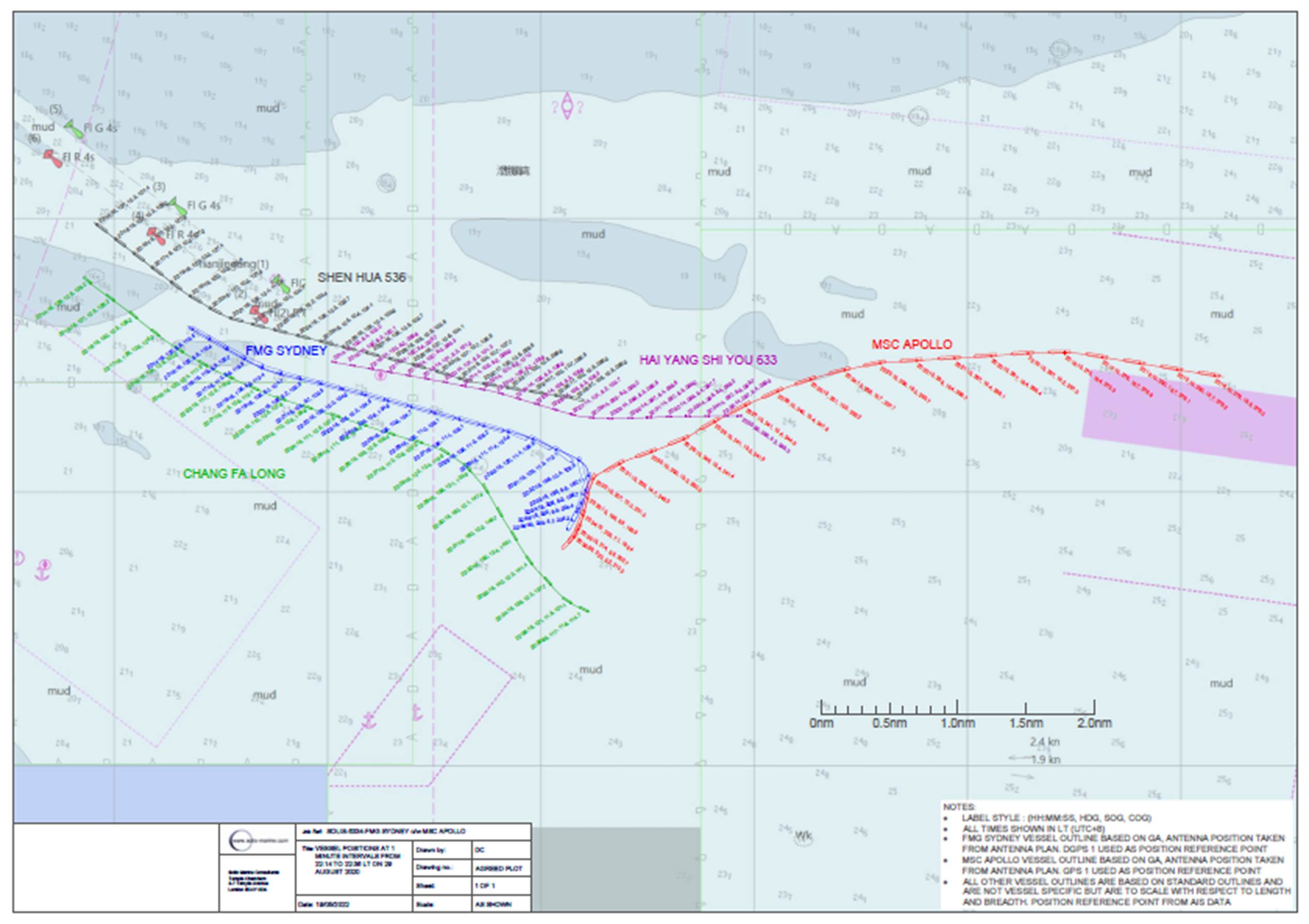B e f o r e :
SIR NIGEL TEARE sitting as a Judge of the High Court
with Captain Nigel Hope and Commodore William Walworth,
Elder Brethren of Trinity House, as Assessors
____________________
Between:
| |
FMG HONG KONG SHIPPING LIMITED,
THE DEMISE CHARTERERS OF FMG SYDNEY
|
Claimant
|
| |
- and -
|
|
| |
THE OWNERS OF THE MSC APOLLO
|
Defendant
|
____________________
Nigel Jacobs KC (instructed by Hill Dickinson) for the Claimant
Vasanti Selvaratnam KC (instructed by Stann Law) for the Defendant
Hearing dates: 29 and 30 November and 01 December 2022
____________________
HTML VERSION OF APPROVED JUDGMENT�
____________________
Crown Copyright ©



